
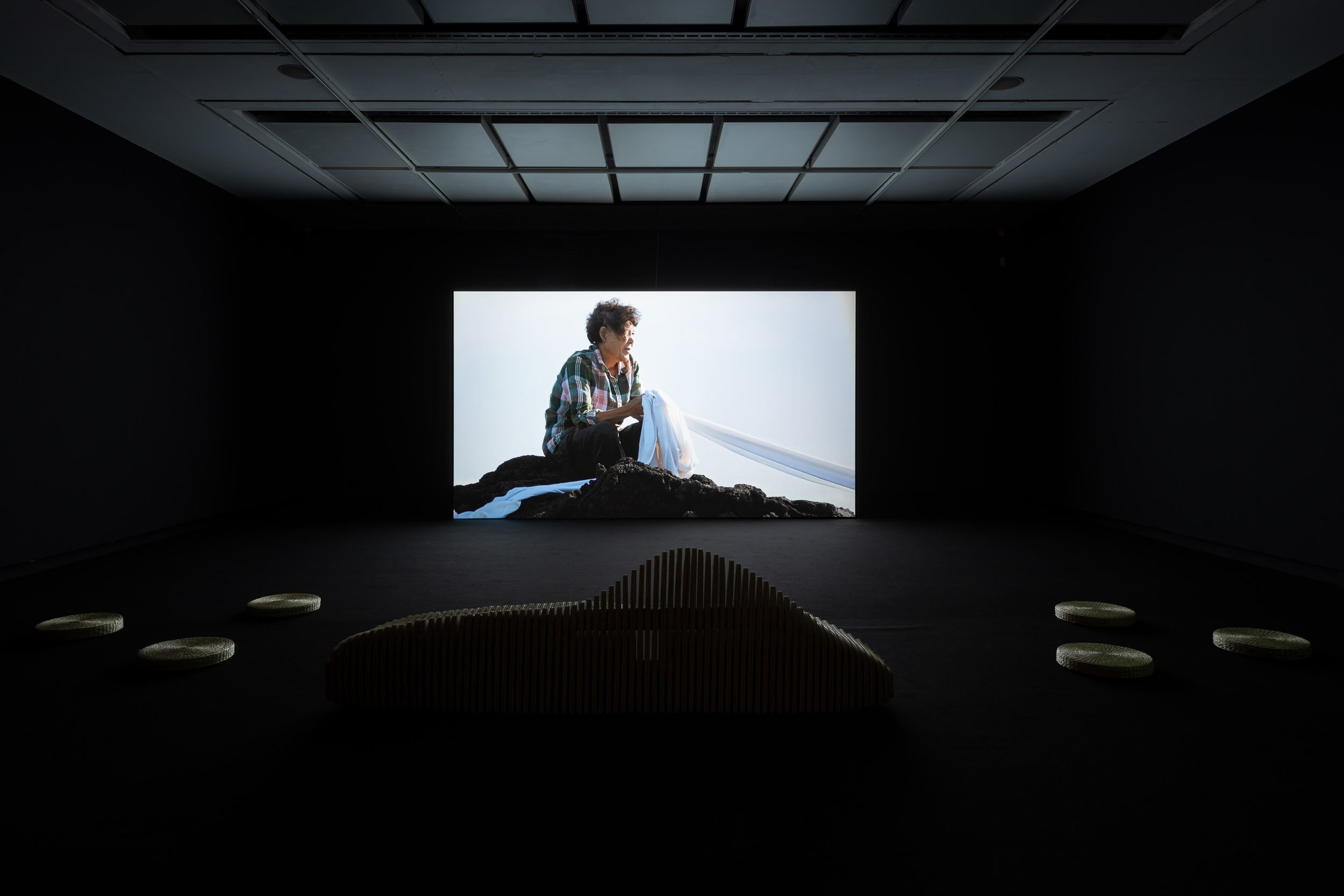
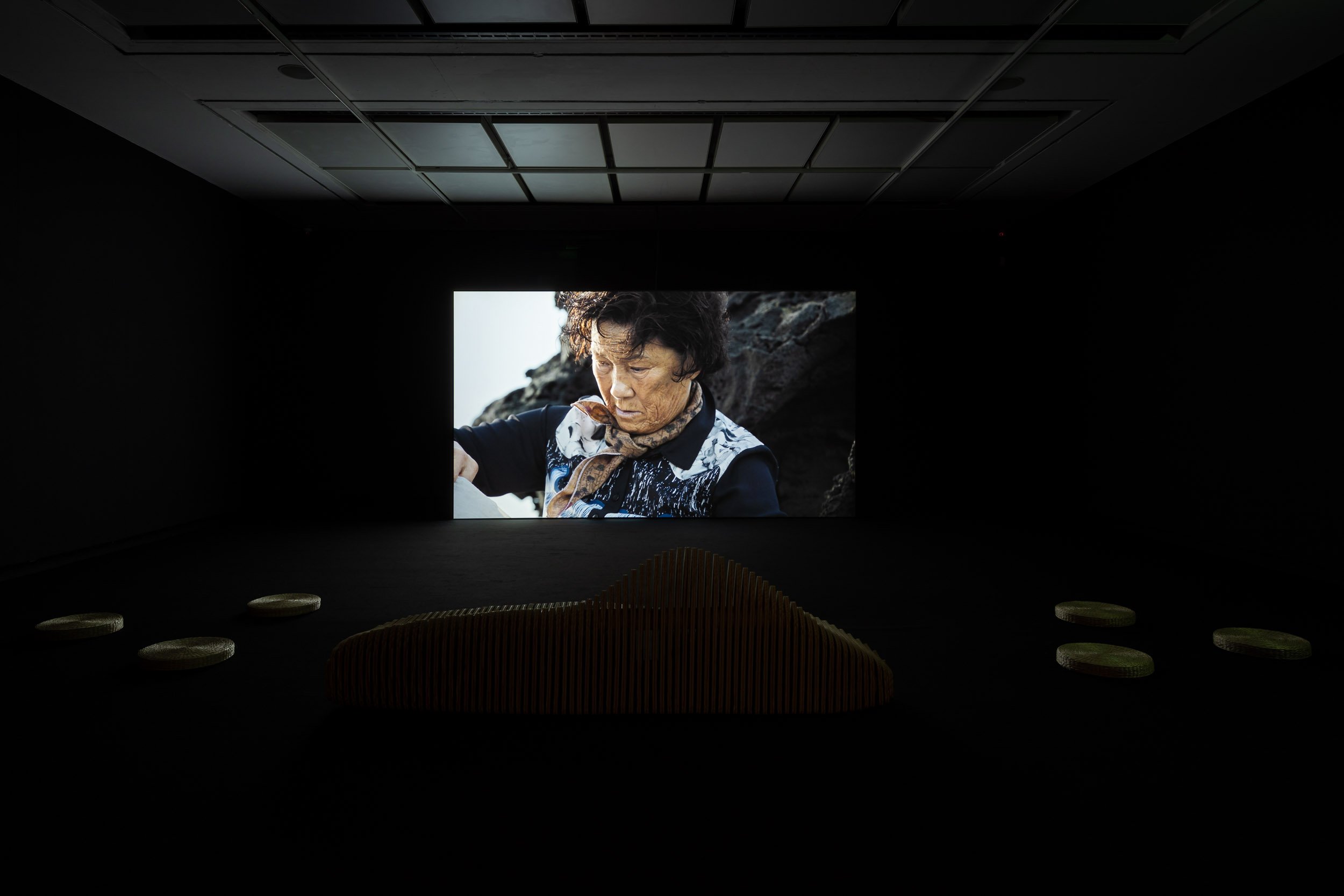
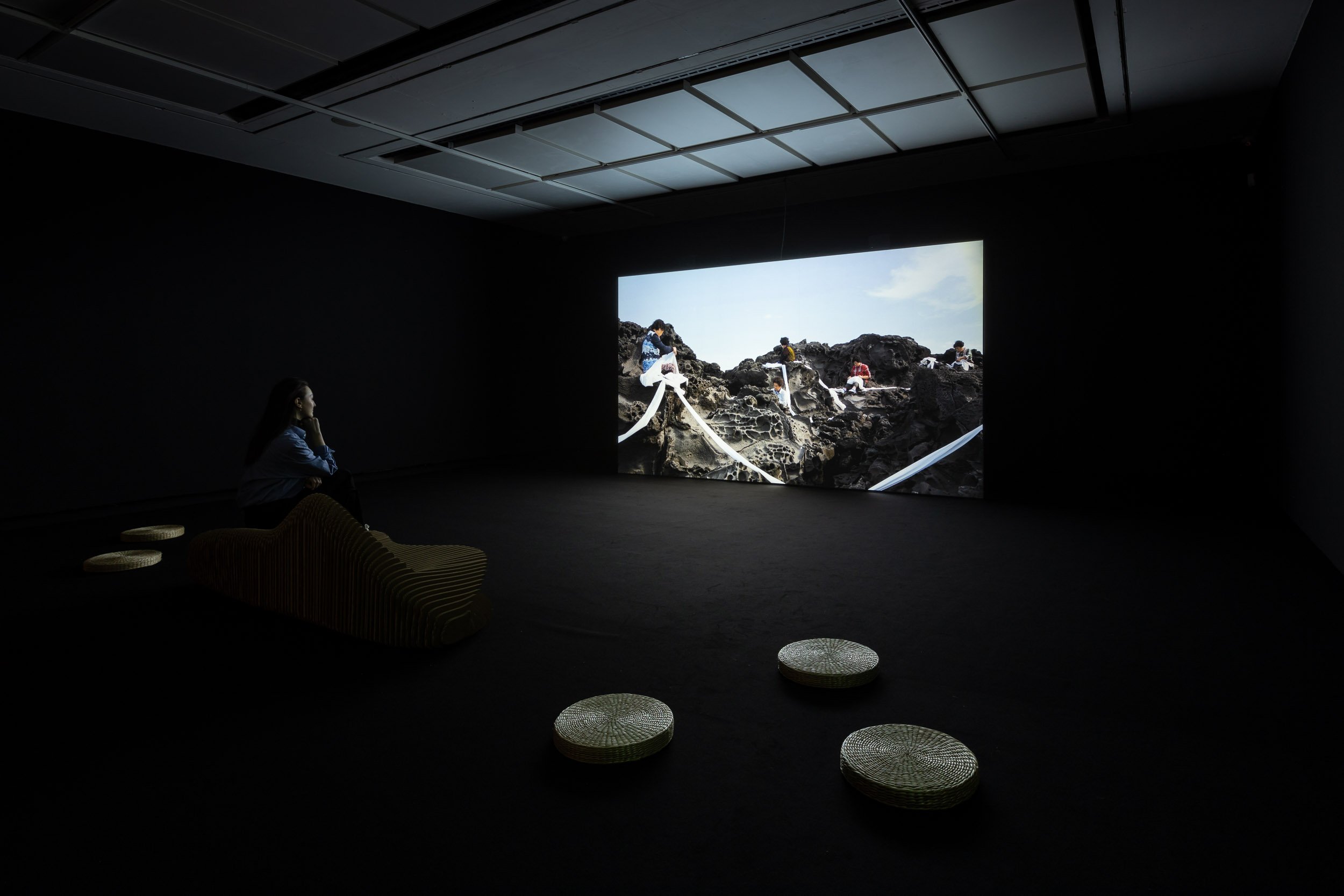
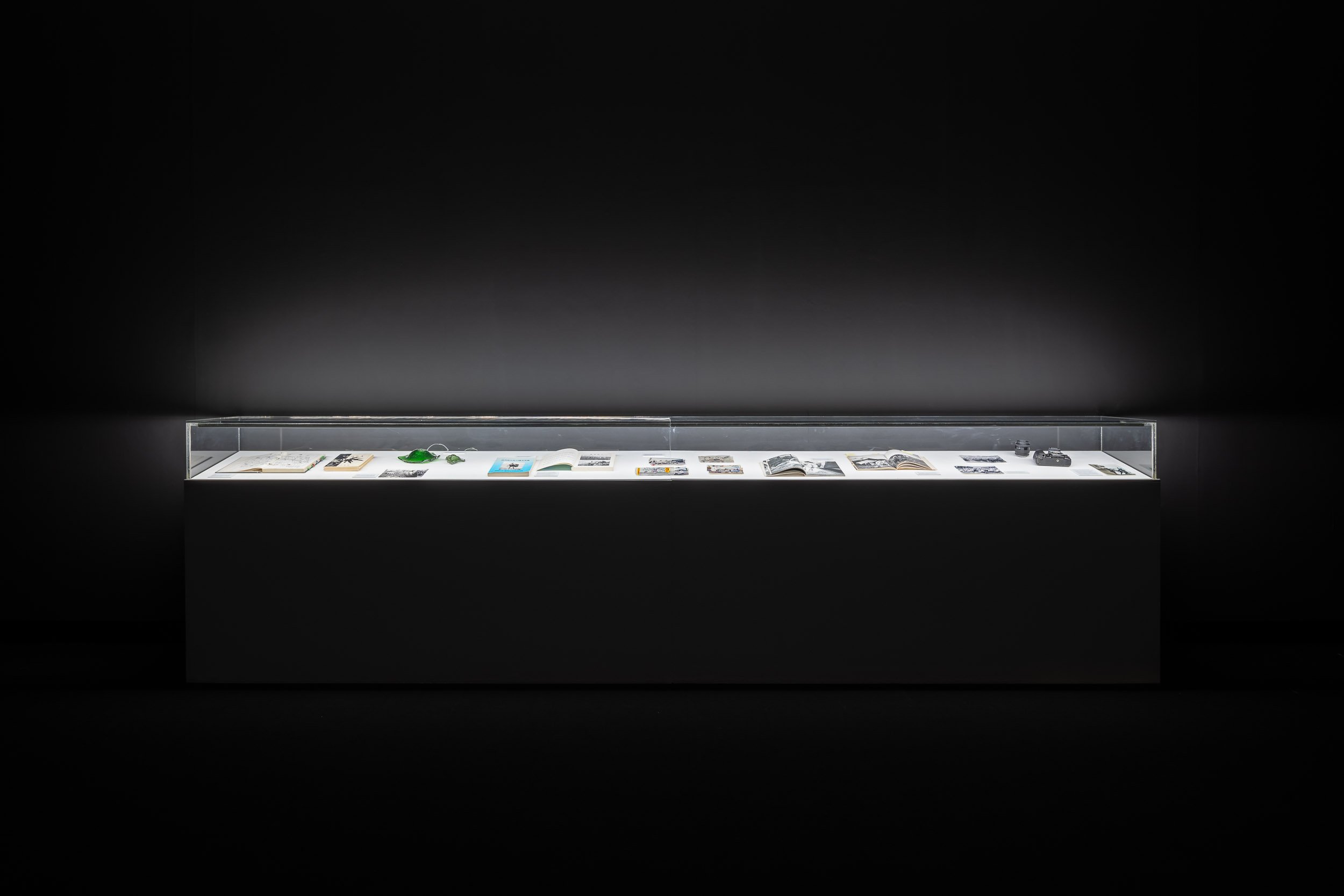




HALMANG, 2023
Single channel film. 4K. Color. Stereo sound. Duration: 12 min.
Halmang revolves around a group of eight women in their 70s and 80s and is filmed by the coast of Jeju Island near a lava rock islet that used to serve as a shrine for the wind goddess Yongdeung Halmang. The women have worked and made a living together for most of their lives as haenyeo sea divers and used to depart for the sea from this very location. It was also from this area that Kaisen’s grandmother during her lifetime worked as a haenyeo. The title Halmang refers to this spiritual and gendered aspect as shamanic goddesses in Jeju are referred to as ‘halmang’. Halmang is also the Jeju term for ‘grandmother’ and a respectful way of addressing women.
The film portrays the aging women’s lived experience, community, and spirituality connected to the sea, the wind, and the island. Central to the work is its focus on the collective use and care for sochang; a white, long cotton cloth associated with female labor and a symbol of the cycle of life and death and humans’ connection to the spirit world. The camera carefully registers their hands, gestures, and facial expressions as they meticulously tend to the fabric. As the piece unfolds, they start connecting the long rolls of sochang until it comes to form a large spiral enveloping the black lava rocks.
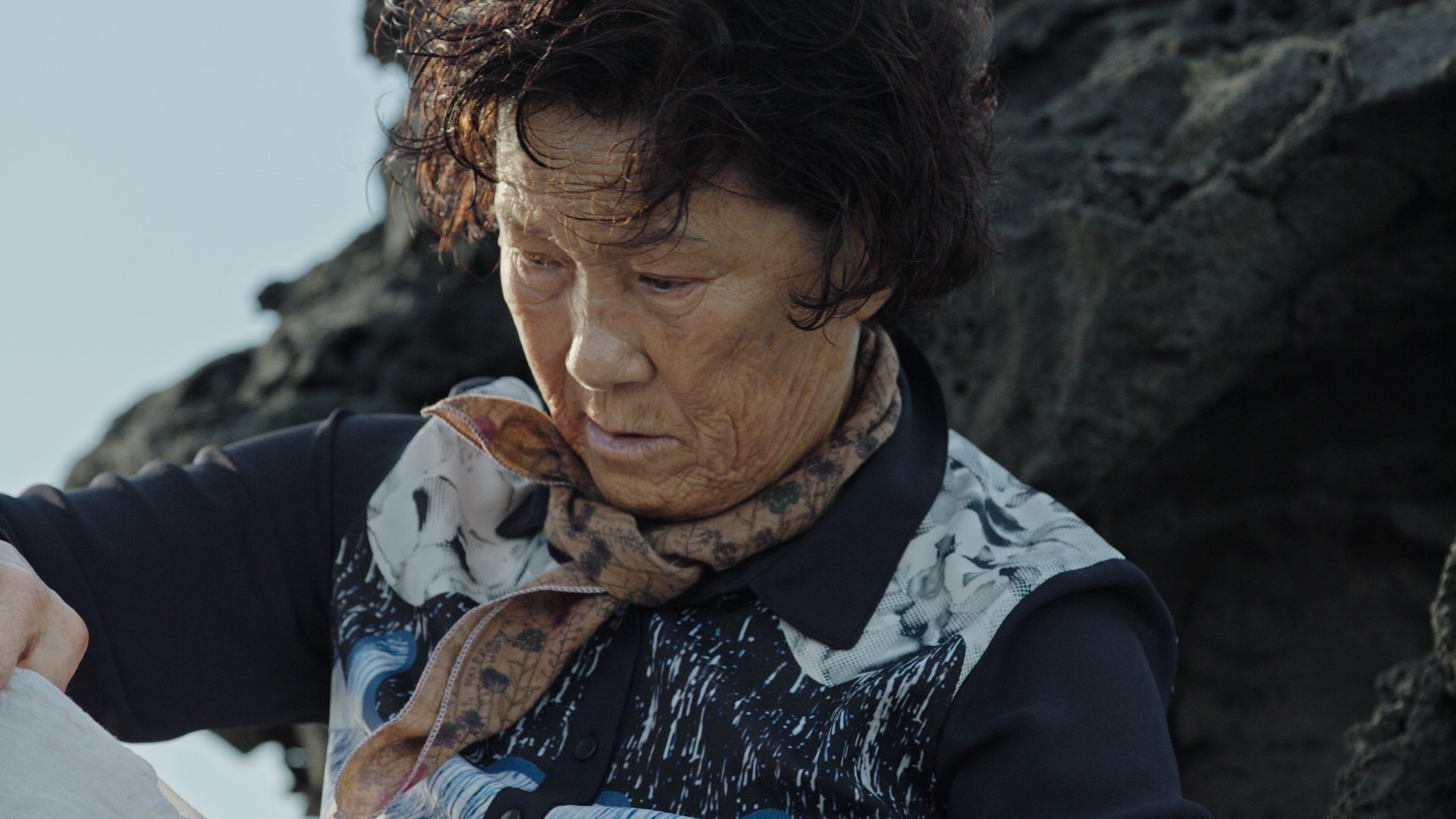
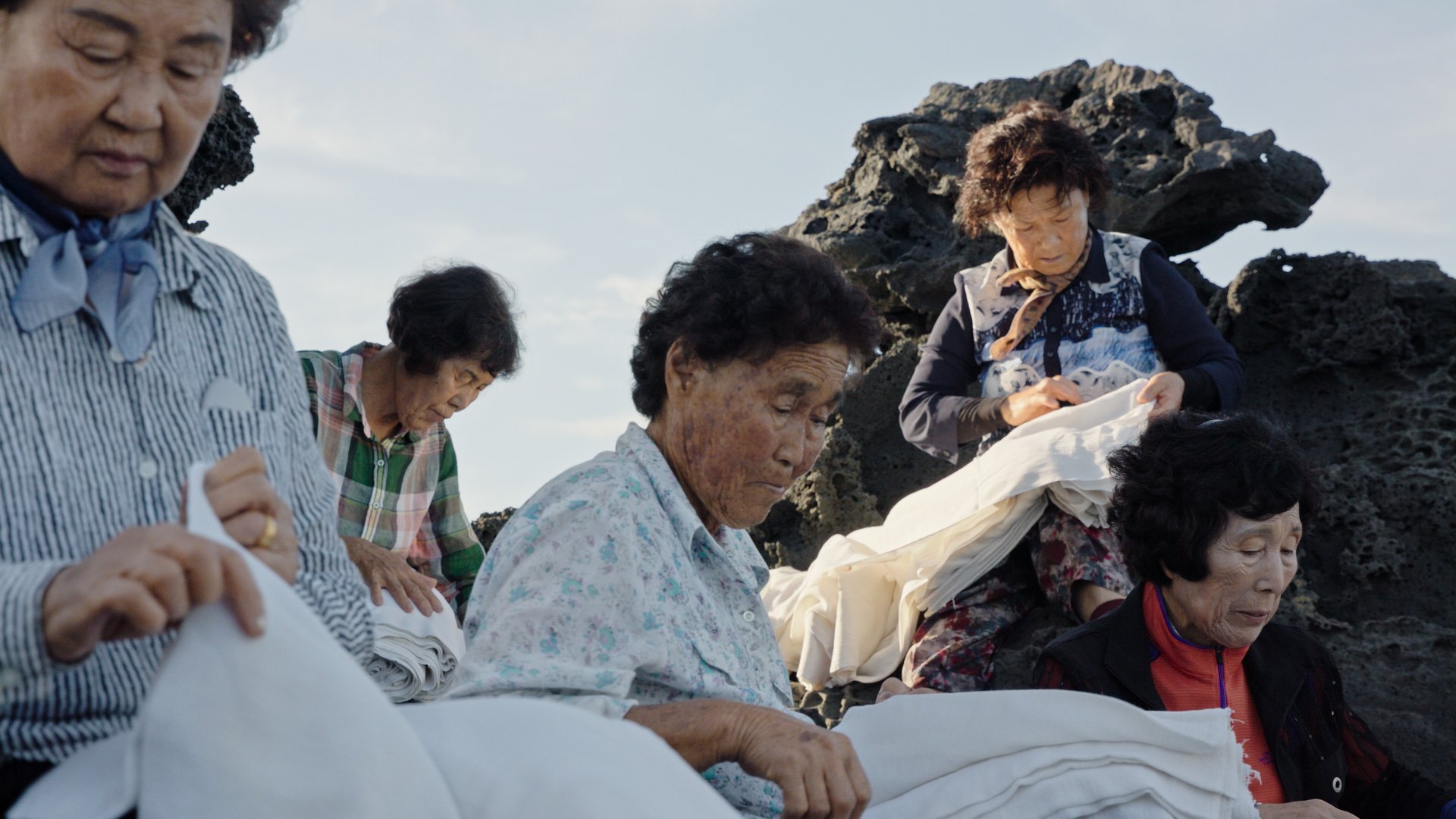

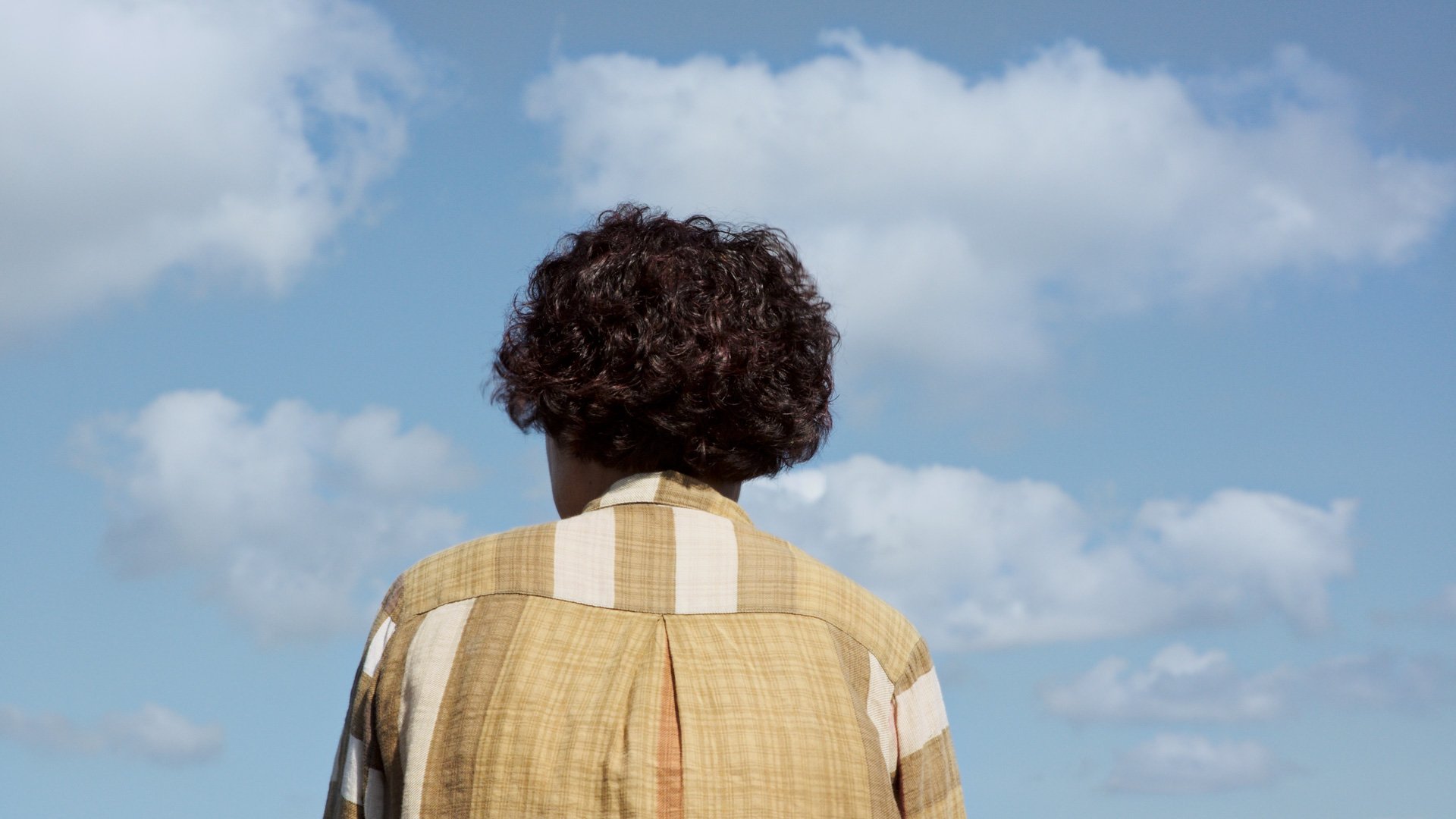
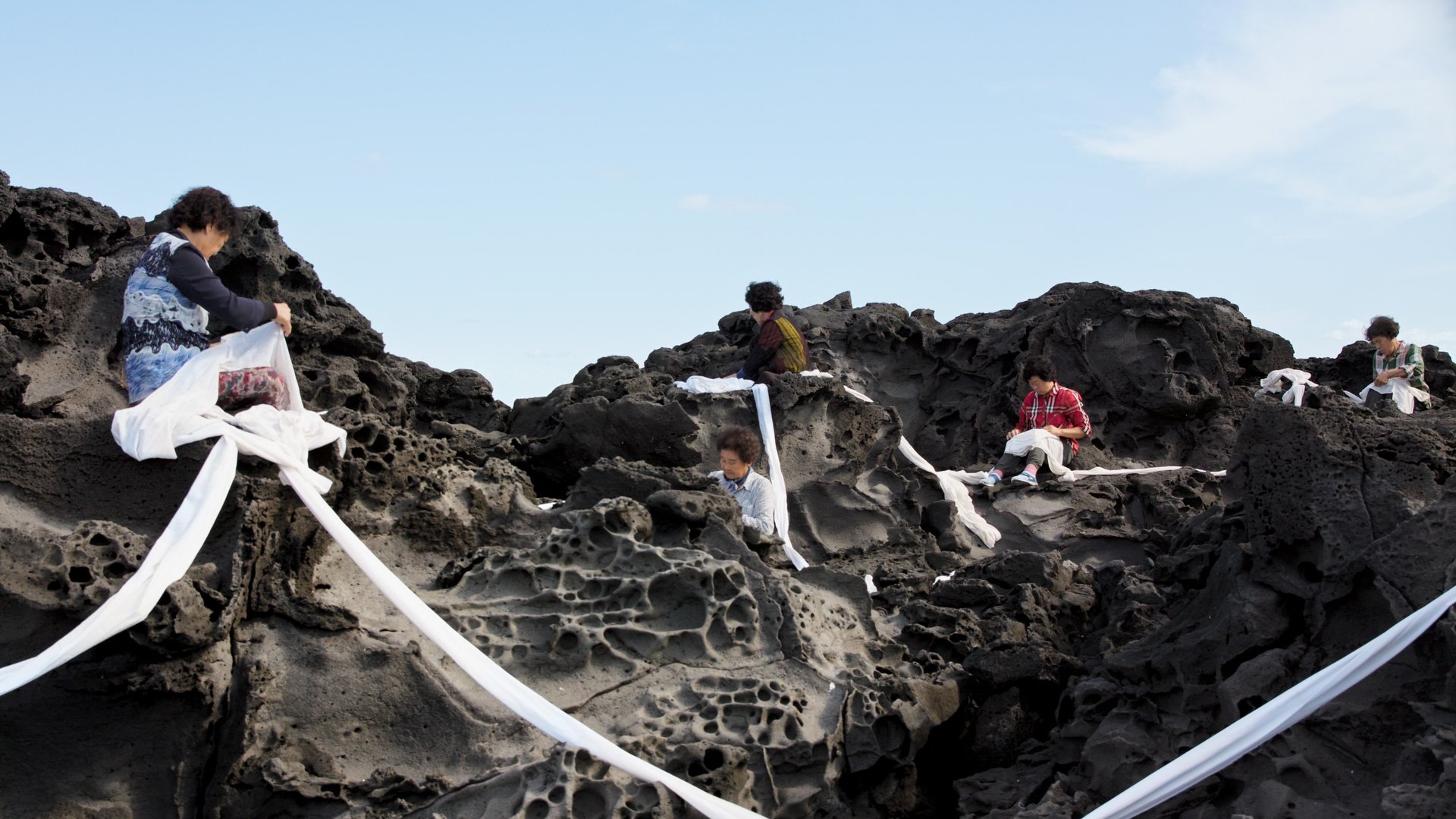

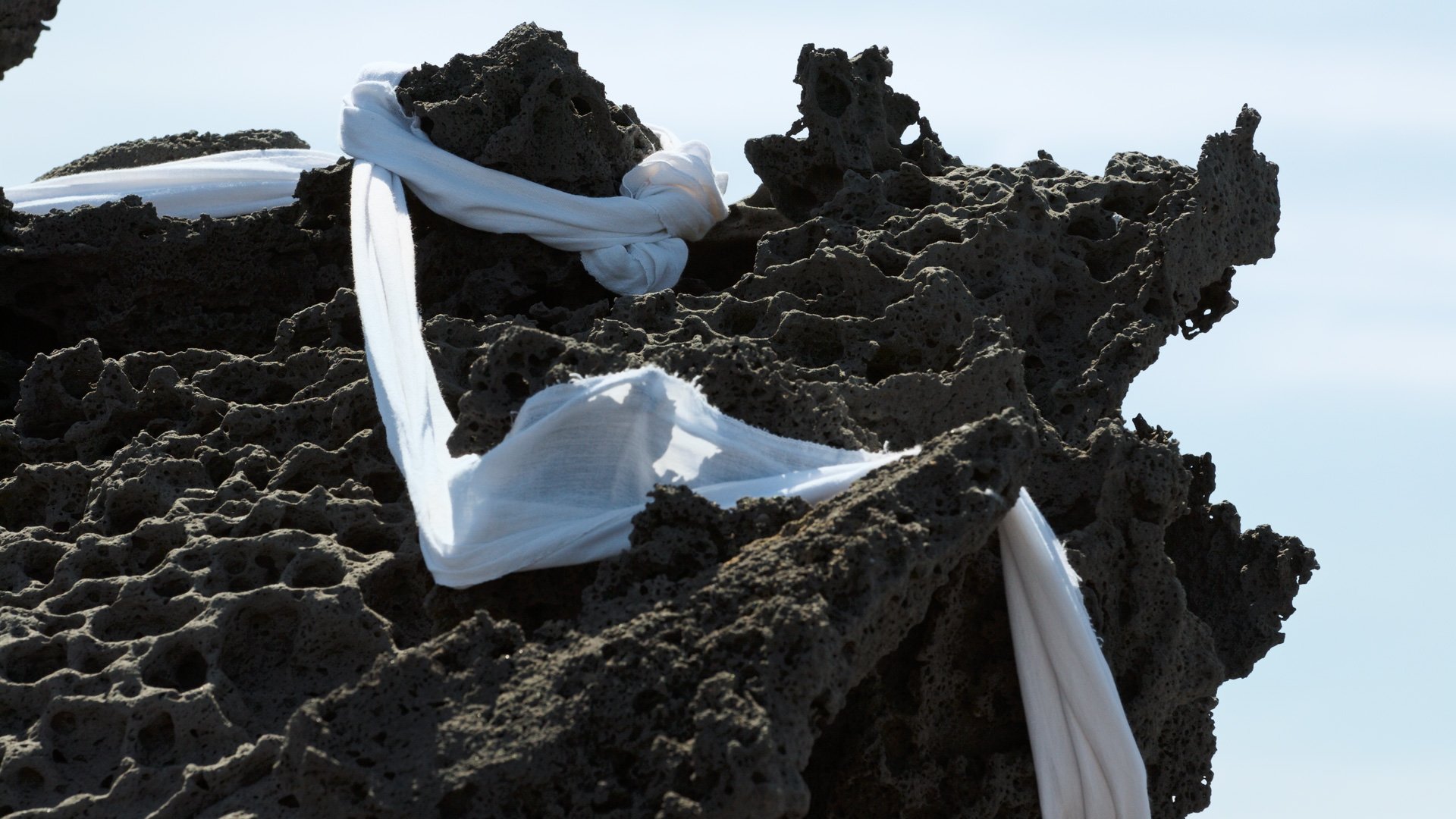
Halmang trailer
Directed and edited by Jane Jin Kaisen. Director of photography: Guston Sondin-Kung. Haenyeo: Yang Mu Ok, Hyun Soon Ja, Gu Young Ae, Koh Byung Sun, Hyun Soon Shim, Oh Ki Sook, Oh Soon Ja, Jung Chun Ja. Line producer: Soyoung Kwon. Production coordination: Yo-E Ryou. Production assistance: Grace Sungeun Kim. Music: Lior Suliman featuring The Song of the Haenyeos (Jeju Special Governing Province Intangible Cultural Asset No. 1) by Gang Gyung Ja and Song of Haenyeo Preservation Association. Colorist: Edoardo Rebecchi. Sound engineer: Yoram Vazan. With special thanks: Hado Fishing village, Ahn Hye Kyoung, Koh Young Bong, Kim Seongnae. With support from: The Danish Artistic Research Funding Programme, Ministry of Culture and The Danish Arts Foundation